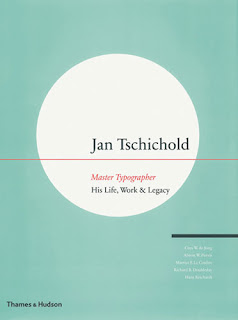Saturday, August 29, 2009
Typography Homework 8/31
Wednesday, August 26, 2009
VISCOM Reading One
Tuesday, August 25, 2009
Josef Müller Brockmann is..
Jan Tschichold is..
Jan Tschichold started off his designing career at a very young age studying calligraphy books and typeface manuscripts. He began at the Academy for Graphic Arts in Leipzig to become a typeface designer. He visited the Bauhaus exhibition in Weimar as a Modernist. He received many design commissions.. all before he was even 20. Jan began using the serifless typeface. His work was intended to symbolize the rationalism of the modern age. The 1923 exhibition of the Bauhaus at Weimar introduced him to Modernist design, and he quickly joined the movement, rejecting traditional fonts and symmetrical composition and instead embracing sans-serif typefaces, geometric construction, and asymmetrical composition.Tschichold went on to create the Sabon typeface with three original weights. The weights were normal, italic and semi-bold until Linotype expanded it in 1984 adding a cursive semi-bold weight. Tschichold also designed transit, saskia, and zeus typefaces. Jan taught typography at Paul Renners Master Classes for Book Printers in Munich. Tschichold moved to the forefront of modern design with “elementare typographie,” a special issue of the trade journal Typographische Mitteilungen in 1925. He worked for many publishers in Basel, and as a graphic designer he had clientele from Insel Verlag publishers. He was the art director at Penguin Books while he lived in England, and oversaw the redesign of 500 paperback at Penguin Books. He later worked as a design consultant for the Basel pharmaceutical company Hoffmann-La Roche. Tschichold went on to write The New Typography: a Handbook for Modern Designers and Treasury of Alphabets and Lettering to name a few. The Van de Graaf canon used in book design to divide a page in pleasing proportions, was popularized by Jan Tschichold in his book The Form of the Book.
Typography Homework 8/25
Define the word "grid"? – A grid breaks space or time into regular units or also a pattern of regularly spaced horizontal and vertical lines. An effective grid is not a rigid formula but a flexible and resilient structure. Frutiger’s grid is a numbering system that distinguishes the width and weight of each of the Univers family’s 21 original cuts. It can be used to make the type selection a simpler process.
Why do we (designers) use a grid? What are the benefits or functions? -- The grid was designed to eliminate confusion caused by different naming systems of typefaces, as well as to make type selection simpler. The benefits are that type selection is simpler and more useful. It can be understood and used as a productive design tool within a short space of time.
What is a modular grid? – A modular grid has consistent horizontal divisions from top to bottom, in addition to vertical divisions from left to right. The modules govern the placement and cropping of pictures as well as text.
Define and illustrate: margins, columns, grid modules, flow lines, and gutter. – A margin is the edge or border of something, or the blank border on each side of the print on a page. A column is a vertical division of a page or text. A grid module is constructed of four columns and four rows to arrange text in many different ways. A gutter is the blank space or inner margin from printing area to binding.
Define: hierarchy – Hierarchy is the logical way to express the importance of different text elements through visual organization.
How are ways to achieve a clear hierarchy? – An example of achieving a clearer hierarchy would be putting the more important elements in the top right corner in a larger and bolder typeface.
Define the type family and the type styles. – A type family is a group of related typefaces that include many separate fonts. The typeface may belong to a larger type family that includes condensed and extended versions and display faces. Type styles include all the ways that a typeface can be modified. For example you can change it into bold, italics, bold italics, roman, or regular.
http://www.proximasoftware.com/fontexpert/terms/










